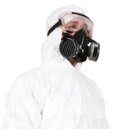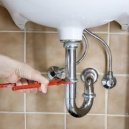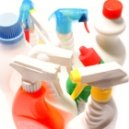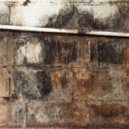Find a pre-screened local mold removal specialist Free Estimate
Find a Mold Specialist Now
Click or Call, Toll-Free 24/7
How To Remove Mold
From Non-Porous Surfaces
Household mold is a common problem and homeowners want to know how to remove mold from a variety of surfaces. Some types of household mold produce toxic compounds and toxic mold removal must be done carefully in order to prevent exposure to these toxins that can make you very sick, causing illnesses ranging from pneumonia and bronchitis to chronic sinus infections and asthma.
Removing Mold from Non-Porous Surfaces
To remove mold from non-porous surfaces such as tile, tubs, sinks, glass, and metal, we recommend using a non-ammonia based cleaner or an antimicrobial mold remover such as Foster 40-80. Apply the mold remover to the moldy surface and scrub with a rag or brush. Clean the surrounding area, as well, since sometimes not all traces of mold are readily visible.
Wear protective gear when removing mold, including disposable gloves and an N-95 face mask (found at most hardware and home improvement stores). Tape sheets of plastic over air vents and close doors leading to other rooms to prevent the spread of mold throughout the home during the cleanup process. If you’re working in a large room, mold removal experts recommend using large sheets of plastic to block off a small work area so that mold spores don’t spread throughout the whole room during the cleanup process.
Mold sometimes grows inside heating and air conditioning ducts, which are typically made of metal which is non-porous. However, removing mold from heating and air conditioning ducts is much more complex than removing it from a bathtub or tile floor. The Environmental Protection Agency recommends calling in a professional if you have mold in your ductwork. A professional will know how to remove mold from heating and air conditioning ducts and have the equipment required to do the job right.
How to Remove Mold from Porous Surfaces
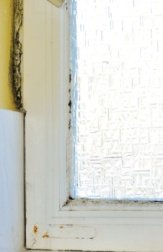
It’s more difficult to remove mold from porous surfaces such as ceiling tiles, drywall, and carpeting. In fact, it’s often impossible to remove mold from such materials and they usually need to be removed and replaced, instead. This must be done very carefully to prevent exposing yourself to toxins that can make you sick and to prevent the spread of mold spores to other areas of the home. Necessary precautions include wearing safety gear like disposable gloves and an N-95 face mask, sealing moldy materials in plastic bags before carrying them out of the house, and using a vacuum with a HEPA filter to clean up dust and other debris creating when removing moldy drywall and other materials.
In addition to the precautions mentioned above, mold removal experts often recommend setting up negative pressure in your work area to prevent airflow out of the area, which keeps mold spores from drifting to other areas of the home. You can do that using a shop vac; for detailed instructions on how to do it, we recommend an ebook by mold remediation expert Brian Turner called A Homeowner’s Guide to Performing Mold Remediation. Follow the link for a full description of the book.
For Help with Toxic Mold Removal
If you need help with toxic mold removal, if you have mold in your heating and air conditioning ducts, or just want some professional advice before beginning the job yourself, we suggest scheduling a free in-home consultation with a mold removal professional. An experienced professional will come to your home, inspect the problem, and provide a written plan of action. He or she can advise you about the most effective mold removal techniques and about the safety precautions that should be taken during the mold removal process. To find experienced mold removal professionals offering free in-home consultations near you, follow the link.
Free Home Inspection By A Mold Removal Specialist
Search This Website

Recent Articles
-
See Our 5 Recommended Mold Removal Companies in Aberdeen, SD
Oct 08, 21 04:05 PM
-
Public Housing Tenant Sick from Mold
Apr 24, 20 01:40 PM
-
Mold Types Found In Homes .......Identification, Finding Mold, Testing
Jan 27, 20 02:32 PM
